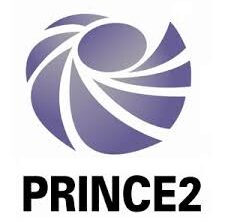Define
Project Charter – at Gate 0, the project charter provides enough information to approve the opportunity for further definition (ie enable initial filtering or down-selecting of projects or opportunities). The charter typically includes goals, objectives, business case, sponsors, team members, scope statement, constraints, assumptions.
Statement of Work (SOW) – tells a ‘story’ about what the team will do to achieve the desired result or future state. How will the team get there?
Work Breakdown Structure (WBS) – define and organize the project work according to a deliverable-oriented breakdown into smaller components (work packages or activities). The WBS can be an appendix of the SOW.
Plan
Project Plan Checklist – a customized checklist that asks key questions about how the project will be managed, executed, monitored and controlled.
Risk Assessment – an ongoing list of risks, scored by severity x likelihood.
Action Item List – an ongoing list of actions. Ideally the action item list would include the problem, issue or opportunity, in addition to the corresponding action. Each action has a person responsible and an action sponsor.
Process Map – almost always necessary as a planning and analysis tool. It may be optional; however, the team should justify why it isn’t needed.
Project Schedule – schedule of activities and milestones, ideally in MS Project. Alternatively, a more informal schedule can be established within the action item list.
Work Breakdown Structure (update) – as a result of more comprehensive planning in this phase, an update of the WBS should be performed.
Implement
Project Status Document(s) – typically MS Powerpoint slides that provide project background information and status. Content can include: original problem statement, vision, business case or expected result/benefit, team members, project status (what’s been done thus far), and next steps.
Close
Lessons Learned – a project retrospective can be added to the MS Powerpoint project status documents.
Summarizing the deliverables (1) charter, (2) SOW/WBS (3) project plan & action items spreadsheet (4) project schedule if MS Project is used, (5) process map and (6) project status document. From 3 to 6 collaborative project planning & execution deliverables, in addition to sponsorship (gate) reviews, can significantly improve a multi-project initiative.
Note the deliverables suggested herein enable the most basic project management for organizations that don’t have resources trained in the discipline of project management or certified project management professionals. (Think “project management for non-project managers” or “project management for core team leaders”.) Also note this approach is best suited for many low risk projects (as opposed to a single, high-risk project).
Also, if pursuing a process improvement initiative, the above framework can be either replaced or complemented by the DMAIC thought process. Define, Measure and Plan, Analyze, Improve, Control and Close. A lean sigma black belt with a background in project management could partner with core team leaders for a successful initiative. Finally, all of the above is scalable and customizable to add structure and clarity to an organizations current-state project management process.





